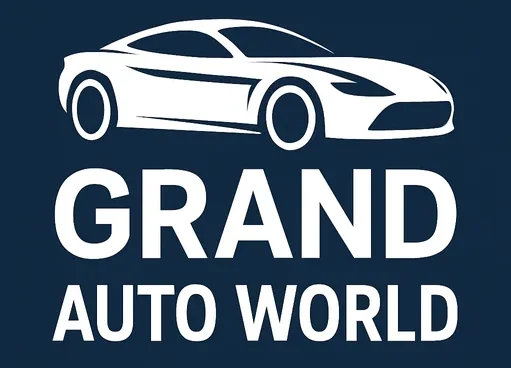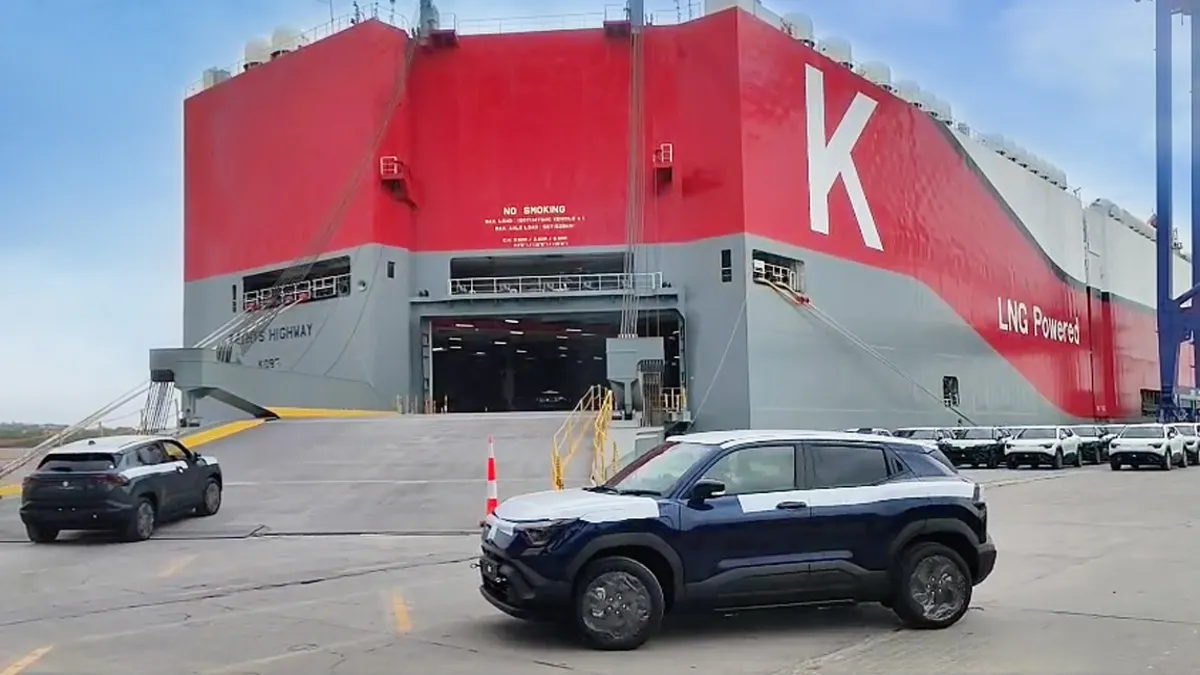Maruti’s e-Vitara Export Surge:
In August and September 2025, Maruti Suzuki announced that it exported a staggering 6,068 units of its flagship battery-electric SUV, the e-Vitara, across multiple global markets. This “e-Vitara export surge” is not just a number — it’s a signal that India’s EV ambitions, manufacturing confidence, and global strategy are entering a bold new phase.

1. The Story Behind the Numbers
Export Milestone
Maruti Suzuki’s announcement states that 6,068 units of the e-Vitara were exported during August–September 2025. Earlier, the first shipment (in August) comprised roughly 2,900 units destined for 12 European countries—United Kingdom, Germany, Norway, France, Denmark, Switzerland, Netherlands, Sweden, Hungary, Iceland, Austria, Belgium. The Times of India
This surge is especially meaningful because Maruti is entering the EV domain with caution, and using exports as a proving ground. The Gujarat facility (Hansalpur, owned by Suzuki Motor Gujarat) is positioned as the global production hub for the e-Vitara. Team-BHP
Global Ambition & “Make in India”
When Maruti began production, Prime Minister Narendra Modi flagged off the first units, underscoring the “Make in India, Make for the World” slogan. Hindustan Times
The idea is clear: build EVs in India for export to 100+ countries as well as for domestic markets.
Maruti and Suzuki have committed to a massive investment in India — ¥8 billion (≈₹70,000 crore) over 5–6 years — to scale EV manufacturing, localize supply chains, and build capacity.
Thus, the “e-Vitara export surge” is as much a political and strategic milestone as it is an automotive one.
2. Domain Crossroads: Technology, Economics & Supply Chain
To understand the import of this surge, we must visit multiple domains:
Technology & Engineering
-
The e-Vitara uses Suzuki’s all-new HEARTECT-e platform, designed for EVs from ground up. Automotive World
-
It offers two battery packs: 49 kWh and 61 kWh. In Europe, its WLTP-certified range is approximately 346 km (49 kWh) to 426 km (61 kWh).
-
The development of the battery system and platform involves collaboration with Toyota and Daihatsu (tri-party platform development). Hindustan Times
-
Local manufacturing includes battery electrode production (though battery cells remain imported).
-
However, one constraint is rare earth supply; earlier in 2025, Maruti reportedly cut near-term e-Vitara production targets due to rare earth material constraints. Reuters
Thus, the export surge depends not just on vehicle assembly, but on upstream hardware, power electronics, battery sourcing, and global supply chains.
Economics & Trade
-
Exporting 6,068 units generates foreign exchange earnings and helps optimize capacity utilization at the Gujarat plant.
-
It diversifies Maruti’s revenue mix: domestic growth has been slowing, pushing Maruti to lean more on exports. mint
-
There is also the strategy of offsetting domestic cyclical weakness via global markets. Maruti aims to export ~4 lakh vehicles in 2025–26. The Times of India
-
The export surge helps India’s narrative as a global manufacturing hub, strengthening geopolitical standing and investor confidence.
Policy, Regulation & Infrastructure
-
Government incentives, import duties, export incentives, and EV policies will influence margins.
-
Infrastructure: For domestic sales, EV charging infrastructure is a known bottleneck. Export-led models circumvent reliance on nascent domestic adoption.
-
International homologation, regulations (e.g. European safety and emissions), and trade rules must also be met.
-
Geopolitics and dependencies (e.g. rare earths from China) may expose vulnerabilities. The rare earth crunch earlier in 2025 is a warning. Reuters
Thus, the export surge is a delicate balancing act across engineering, economics, policy, and risk.
3. Comparisons, Challenges & Risks
To fully appreciate the significance (and limits) of the export surge, we must compare and contrast.
Peers & Competition
-
In India, Tata, Mahindra, Hyundai, MG are further ahead in EV domestic sales.
-
Their export footprints are limited in the EV segment. Maruti’s export-first approach is distinctive.
-
In other lands, automakers often ramp domestic demand first; Maruti is flipping that order.
-
The e-Vitara competes with models like MG ZS EV, Tata Curvv EV, Mahindra BE6, Hyundai Creta EV, Kia Syros EV, etc.
Production Constraints & Supply Chain
-
The earlier production cut due to rare earth constraints underscores fragility in sourcing critical minerals. Reuters
-
Logistic constraints (port capacity, shipping costs, customs) can affect export momentum.
-
Quality, consistency, and service network expectations in export markets are far higher than for domestic markets.
Demand Risk & Market Response
-
Export volumes may vary depending on demand in Europe, UK, Japan etc.
-
Currency fluctuations, trade barriers, tariffs, and competition could erode margins.
-
The Indian launch of e-Vitara is anticipated in early 2026, but domestic demand might lag. mint
Strategic Risk
-
If Maruti overcommits to exports and domestic EV adoption lags, that could lead to idle inventory or reputational risk.
-
Technological shifts (solid state batteries, faster charging) may render initial versions obsolete quickly.
Also Read: https://grandautoworld.com/kia-sales-surge-september-2025-marks-comeback/
4. What the e-Vitara Export Surge Means for India & the Auto Sector
Manufacturing Identity & Global Credibility
This surge helps solidify India’s place in the global EV supply chain. It shows that India is not just a low-cost assembler but can compete in high tech, globally homologated EVs.
Investment Magnet
Such export success can attract further domestic and foreign investment in EV ecosystem — battery plants, semiconductors, raw material refining, charging infrastructure, R&D hubs.
Innovation & Skill Development
Localizing EV technology will require upgrading skills — software, power electronics, thermal management, battery engineering. The export success will demand continuous innovation.
Ecosystem Ripple Effects
Ancillary industries — wiring harnesses, power modules, battery management systems, charging station makers — are likely to benefit. Also, logistics, port infrastructure, and packaging industries gain.
Strategic Autonomy & Resilience
By exporting EVs, India reduces dependence on imports of finished EVs from abroad, and gradually builds sovereignty in critical EV components. But dependencies like rare earths remain a risk.
5. The Road Ahead: Lessons, Projections & Recommendations
Ramp Smartly, Not Just Rapidly
Maintain quality, ensure supply chain robustness, manage cost pressures. Don’t sacrifice reliability for numbers.
Push Domestic Demand in Parallel
Exports can’t be the only route. Domestic EV adoption must rise with incentives, infrastructure, and consumer awareness.
Diversify Supply Chain
Reduce dependence on rare earth imports or single-country suppliers. Expand upstream capabilities (e.g., battery cell manufacturing in India).
Agile Product Updates
EV tech evolves fast. Maruti must be agile to upgrade battery chemistry, range, software features mid-product cycles.
After-Sales & Service Readiness
For export markets, service network, parts availability and brand trust matter. Even export models must be backed by support.
Balanced Strategy
While the “e-Vitara export surge” is a milestone, it’s a piece in a larger puzzle. Balanced growth across export, domestic, innovation, and risk management will define success.
Also Read: https://grandautoworld.com/ev-bike-sales-september-2025-soar-to-96031/
Conclusion
The e-Vitara export surge of 6,068 units is more than a headline: it’s a statement. It signals that India is ready to compete in the global EV arena. It tests the mettle of Maruti Suzuki’s strategic vision, supply chain strength, engineering prowess, and ability to juggle global and local scales.
For readers and potential buyers, this surge is a confidence booster — India can build EVs for global markets. For industry watchers, it’s a bellwether for India’s EV future. And for policymakers, it underscores the urgency of supporting infrastructure, supply chain sovereignty, and regulatory clarity.
If done right, this is just the beginning — the e-Vitara export surge might soon become routine rather than exceptional. But on this momentous occasion, India and Maruti deserve the spotlight.

